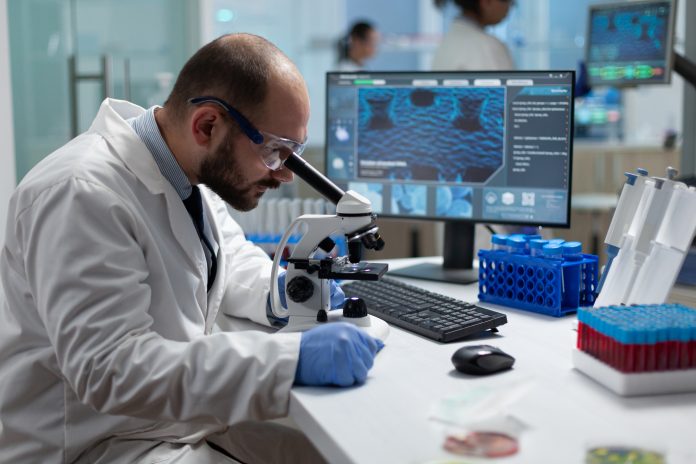Richard Armstrong at NEC Software Solutions UK examines how as our population ages, it has the power to speed up medical interventions at scale
The growing economic pressures associated with an increasing prevalence of age-related disease, combined with the inflationary costs of medical care, means there has never been a greater need to seek out cost-effective patient treatments and outcomes.
While clinical trials play an essential role in developing the right treatments for the right patients, it is difficult for a trial to consider all the factors that might affect a successful outcome. For example, whether a patient is suffering from more than one chronic health problem.
If identical twins can respond to the same illness or treatment differently as a result of genetic variations, imagine the potential difference in responses when multiplying that out to the general population. Do so and you can begin to see why there is a growing acknowledgement of the need for a more broad-based approach to accruing scientific evidence, on what works best at scale.
Our individual responses to medical interventions are based on a myriad of factors including our environment, underlying health conditions and socio-economic grouping, which can all determine how a medicine or device is used and works in real life.
Although clinical trials remain at the forefront of scientific research and development there is rising acknowledgement that real-world evidence (RWE) is staging its own quiet revolution.
A less generalised approach
The NHS Long Term Plan sets out how personalised care will become ‘business as usual’ across the healthcare system.
RWE can facilitate this vision as advances in machine learning and AI will enhance the medical community’s ability to make more informed assessments about product performance within real-world settings. As the new technology will be able to extrapolate the data from multiple real-world sources the clinicians will be able to adopt a less generalised approach to patient care at speed and with greater accuracy.
By 2025 it has been predicted that 70% of clinical trials will incorporate some form of sensors and health tracking devices. Smart sensors, wearable tech, electronic medical records, and clinical registries are all rich sources of insight, but for the medical community to consider this type of data robust and reliable evidence, there needs to be systematic and rigorous processes. Broader adoption of the data as real-world evidence will rely on having mechanisms in place to quality assure the data, like those set up in independent registries such as the National Joint Registry (NJR).
Improving patient outcomes
RWE is the clinical evidence regarding the usage and potential benefits, or risks of a medicine or device derived from the analysis of the data collected on how it’s being used or is performing in a large-scale real-world setting. It provides supplementary evidence to Randomised Controlled Trials (RCTs), and its ultimate power lies in its volume, as the more quality data accrued the more statistical confidence there is in the findings.
It presents healthcare providers with a larger and more accurate evidence base to identify trends and patterns, giving them increased confidence to determine what intervention will be most effective under which conditions. This will lead to improvements in patient care. An increasing number of patients will also be able to benefit from more effective medical therapies becoming available quicker and at scale.
But for this confidence to not be misplaced, the collection of quality RWE is essential as it directly impacts on the reliability and relevancy of the information. Having recognised mechanisms and processes in place like those in a registry will be increasingly important going forward. The data held and analysed in registries can help play a vital role in the design and creation of new critical treatment pathways, by measuring the effectiveness of medicines, therapeutical and implant interventions against a larger cohort of patients than is possible in clinical trials.
Improved post-market surveillance
Clinical trials play an essential role in the development of treatments, but they only afford a partial view of what might happen at the mass market stage. Practical challenges like cost, location and patient recruitment render them narrow in scope.
A study published by the Journal of the American Medical Association found that a third of all FDA approved drugs were involved in a safety event when they reached the mass market. It highlighted that most of the drugs were assessed during clinical trials of 1000 patients or less and when subsequently used in a real-world setting, complications arose. Leveraging RWE drawn from a wider population is hugely beneficial as it holds up a mirror as to what will, or is most likely to happen, in real life.
Clinical trials are also artificial in the set up and not representative of what can happen in normal life. This can mean the results are skewed. For example, during a trial, patients will be closely monitored to see whether they are taking their medicine regularly, or at a set time and if so, if any adjustments still need to be made to ensure the intervention is effective. Such supervision does not happen at the post market stage and can mean the medicine or devices performs quite differently when the patient is unmonitored at home.
Greater use of RWE will bring more robustness to post-market surveillance.
Valid scientific evidence
Regulators, pharmaceutical and medical device companies, clinicians, and healthcare providers are increasingly recognising that clinical research data alone is not the answer. RWE is the perfect foil to clinical trials providing stringent processes are in place to collect and analyse the data. As such, it’s a potentially powerful new weapon in the treatment and advancement of human health.
Although randomised controlled trials remain the gold standard of scientific evidence there is increasing acceptance that greater use of real-world evidence represents a quantum leap forward in the quest for a more global understanding of what works, for whom and why.











